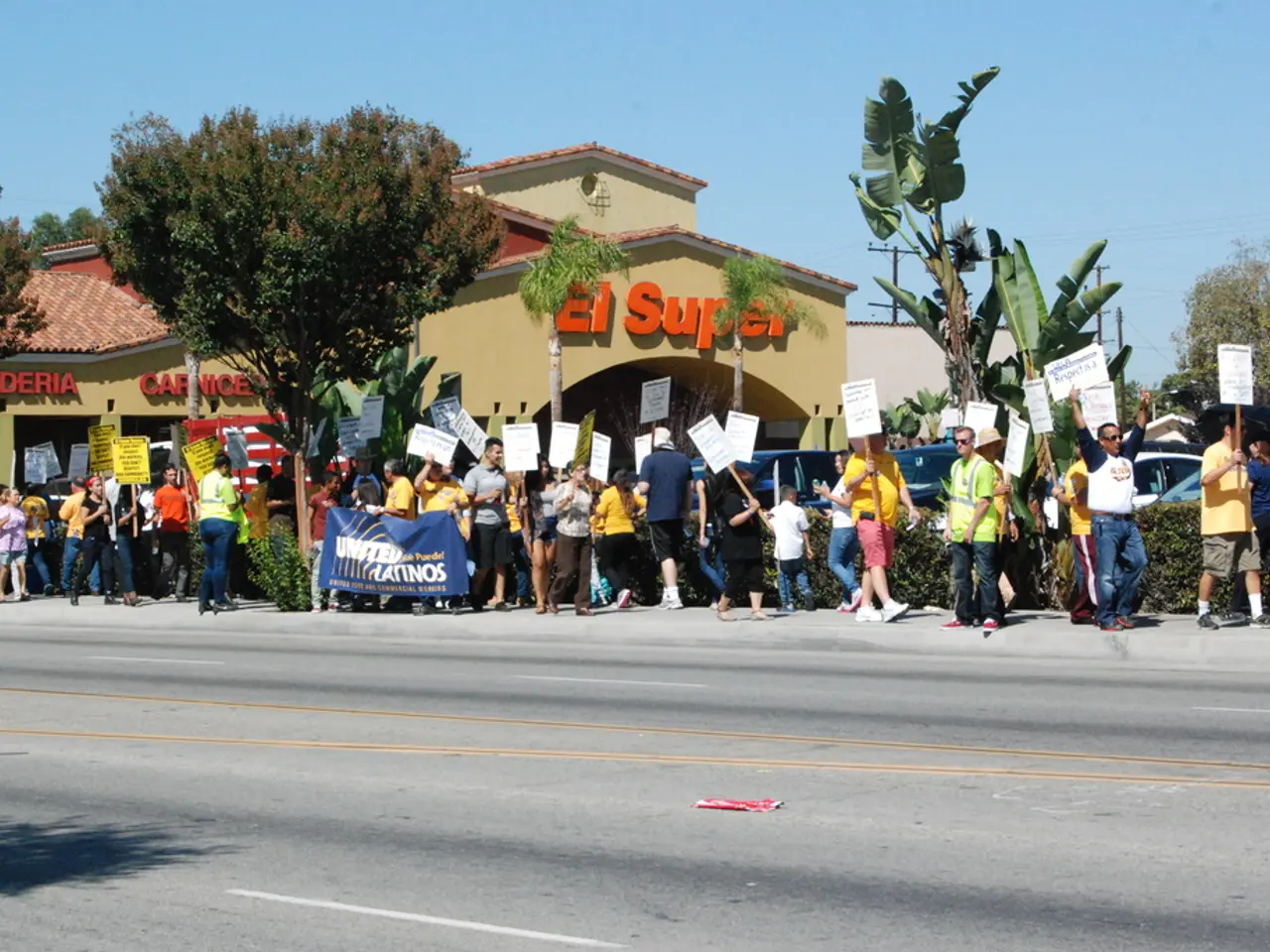Enhancing Political Polls: Strategies for Boosting Participation in Electoral Questionnaires
In the realm of politics, understanding public opinion is crucial for making informed decisions. Political surveys serve as essential tools to gauge public sentiment on various issues, predict election outcomes, and determine the level of support for candidates or political parties.
To ensure the reliability and accuracy of these surveys, several best practices should be followed.
Targeting the Right Audience
Identifying and targeting a specific, representative audience is key to obtaining meaningful results. For example, when conducting a survey for a senatorial candidate, the focus should be on registered voters in that state. Demographic screening questions can help ensure the sample's relevance.
Choosing the Optimal Survey Method
The choice between phone surveys and online surveys depends on the balance between depth and reach. While phone surveys often yield in-depth responses, they have lower participation rates. On the other hand, online surveys get higher raw responses but can suffer from incomplete data if too complex.
Streamlining Survey Length and Design
Avoiding overly long or complicated questionnaires is essential to reduce drop-off rates. Use plain language, clear visuals, and ensure mobile optimization to facilitate completion.
Crafting Clear, Unbiased Questions
Avoiding double negatives, double-barreled constructs, or partisan language is crucial to ensure questions are neutral and unbiased. This helps to gather accurate and unbiased public sentiment.
Creating Engaging, Personalized Survey Invitations
Personalized invitations can boost initial click-through and participation rates. Testing subject lines and messaging can further increase engagement. Follow-up reminders, appropriately spaced, can also encourage responses without overwhelming recipients.
Optimizing Timing of Survey Distribution
Distributing surveys according to the audience's typical routines or behaviors can increase the likelihood of engagement.
Incentivizing Participation
Offering incentives, such as gift cards or other rewards, can motivate responses. This tactic can be particularly effective when trying to reach hard-to-contact demographics.
Performing Data Quality Checks
Identifying satisficing behaviors, such as straight-lining, frequent nonresponse, or duplicate participation, and removing or weighting respondents as needed can improve dataset reliability.
Using Weighting Adjustments
Weighting adjustments can correct for sampling biases and non-response, aligning the respondent pool to known population benchmarks for accurate inference.
By implementing these strategies, we can improve both response rates and the quality of political survey data, leading to more accurate and credible insights.
Political surveys can predict election outcomes or determine the level of support for a particular candidate or political party. However, accuracy in political polling depends on various factors, including methodology, timing, turnout modeling, sampling bias, and external events that may shift voter sentiment. Conducting political surveys during campaign seasons offers timely insights into voter preferences, helping campaigns adjust strategy and forecast likely outcomes in upcoming elections.
Questions in political surveys should be clear, neutral, concise, single-topic, and avoid leading or ambiguous phrasing. Monitoring shifting responses across multiple surveys identifies dynamic changes in public sentiment rather than relying on a single poll. Regression can help identify how variables like income or education influence responses to questions, isolating factors that affect opinions.
Stratified sampling, which divides the population into demographic groups such as age, gender, or geography and samples each subgroup proportionally, can improve survey accuracy.
In conclusion, political surveys are invaluable tools for understanding public opinion and making informed political decisions. By focusing on targeting the right audience, designing clear and concise surveys, and distributing surveys through appropriate channels and timing, we can optimize political survey response rates for accurate data collection. Additionally, offering incentives and implementing robust data quality checks further enhance response reliability and representativeness.
Politicians should target a specific, representative audience when conducting surveys to obtain meaningful results, as shown in the example of a senatorial candidate focusing on registered voters in their state. By using demographic screening questions, they can ensure the sample's relevance.
To ensure the accuracy of political surveys, it is crucial to choose the optimal method between phone and online surveys, streamline survey length and design, craft clear, unbiased questions, personalize survey invitations, optimize timing of survey distribution, incentivize participation, perform data quality checks, and use weighting adjustments where necessary, as these strategies can improve both response rates and the quality of survey data.




